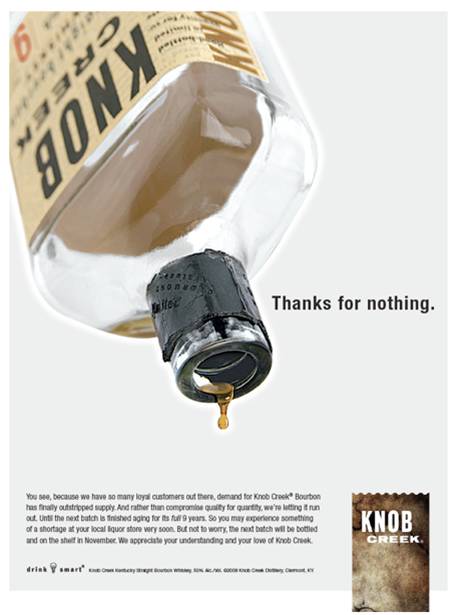BY bbulman
scar·ci·ty (skâr’sĭ-tē)
n. pl. scar·ci·ties
- Insufficiency of amount or supply; shortage: a scarcity of food that was caused by drought.
- Rarity of appearance or occurrence: antiques that are valued for their scarcity.
People assigned a higher value to products or services that are less available. This principle can be used to help push products/services using techniques such as:
- A “limited number” available
- Only available for a “limited time”
These techniques try and persuade consumers that there is limited access to what is being offered.
The principle of Scarcity works because:
- Things difficult to attain are typically more valuable. And the availability of an item or experience can be perceived as a clue to its quality.
- When something becomes less accessible, the ability to have it may be lost.
People respond to that lack of ability to own an object by wanting it more. In psychology this is called Reactance Theory.
A perfect example of this from the movies is Gollum’s fateful obsession for the ring in the Lord of the Rings trilogy. Real world examples of this include car enthusiasts’ obsession over limited production cars and some women’s interest in owning a Prada or Gucci bag.
The later phenomenon actually led to the opposite of Scarcity, which is Abundance. Due to the high demand for high-end bags, but the inability for many women to afford them, a market for counterfeit bags appeared, subsequently lowering the perceived value of a Prada or Gucci bag, due to them being more accessible.
Scarcity does not just impact goods and services, but also information. Limiting access to information may cause consumers to want it more and becoming increasingly favorable to said message. It is also found that this “scarce” information is perceived as more valuable and more interesting to the consumer.
Real world examples of this are Censorship. Once information becomes censored, many people become very obsessed with wanting access to the information being held back.
Scarcity best works under the two following conditions:
- Scarce items are heightened in value when they are newly scarce. Items have higher value when they have become recently restricted–more than items that were restricted all along have.
- People are most attracted to scarce resources when they have to compete with others for them.
Defense against scarcity tactics are difficult because scarce items have an emotional quality that makes true consideration difficult.
Related Posts






